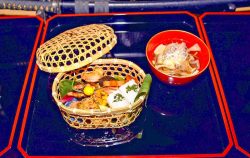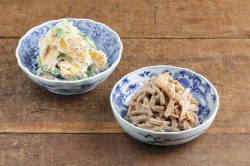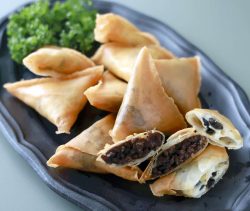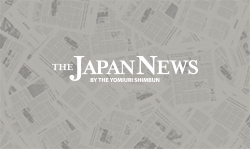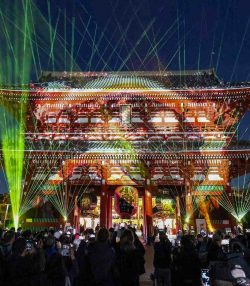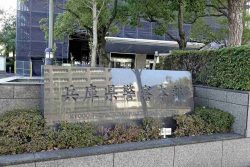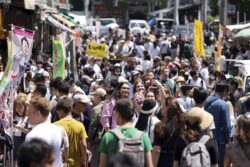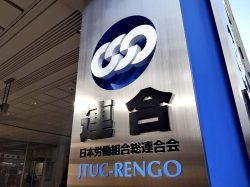
A special soy sauce-flavored ramen served at Ramen Break Beats in Meguro Ward, Tokyo
12:30 JST, March 16, 2025
One evening in late January, customer after customer ducked through an eye-catching red door after entering a password into a machine outside a ramen restaurant on a shopping street in Shibuya Ward, Tokyo.
This is the Japanese Soba Noodles Tsuta restaurant, the first ramen joint to be awarded a Michelin star. Only in the evenings, this compact restaurant serves a maximum of 23 customers at its counter and tables full-course meals centered around a bowl of ramen.
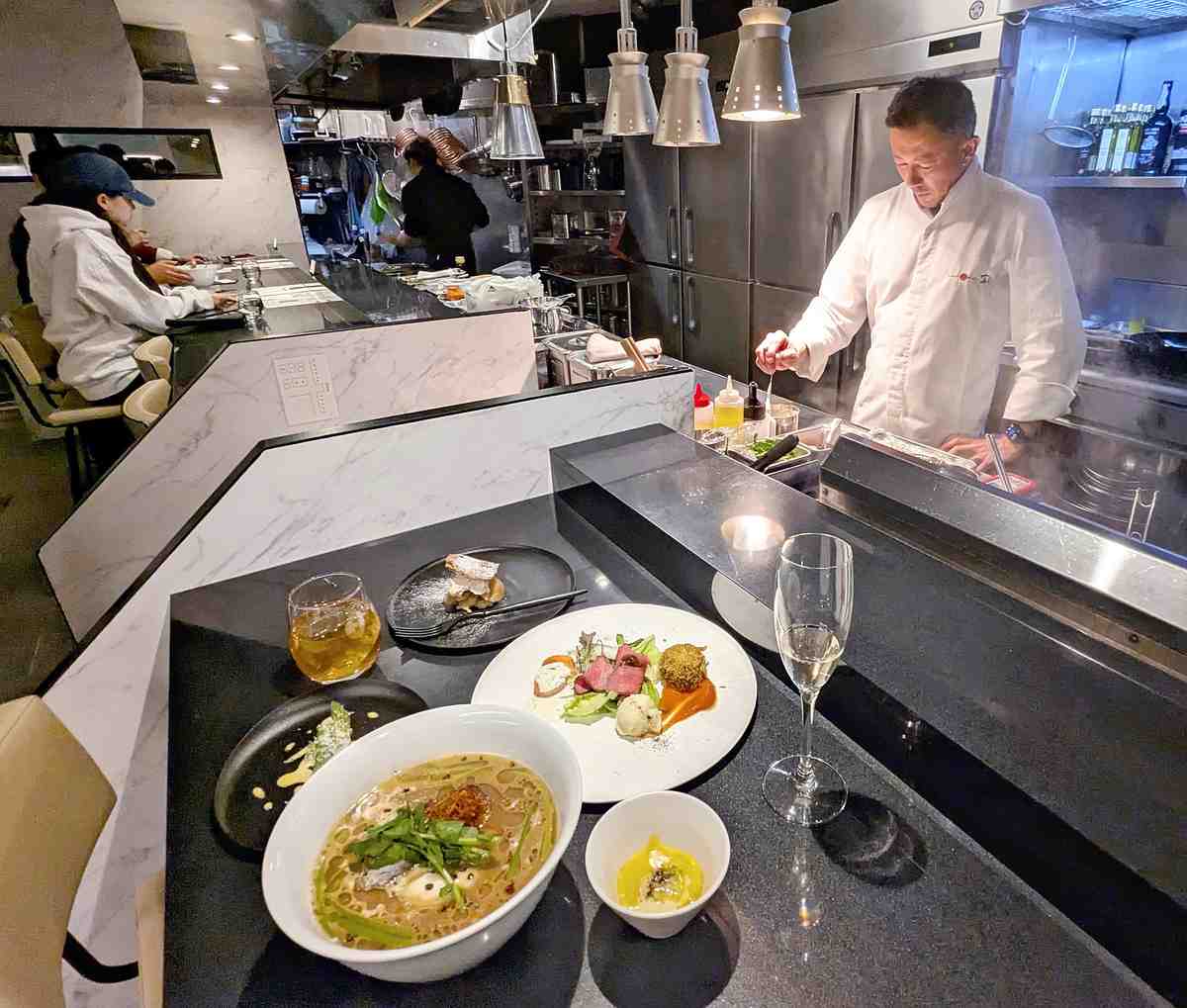
A bowl of ramen is the centerpiece of a course meal prepared and served at Japanese Soba Noodles Tsuta, a ramen restaurant in Shibuya Ward, Tokyo.
The first item to arrive on the chic black table was a fermented welcome drink. This was followed by a salmon confit and roast beef appetizer and a thick pumpkin and whitebait soup.
The main dish was ramen, with the specific flavors changing every month. With Valentine’s Day just around the corner, January’s ramen was a lavish dish featuring a cream sauce made from Amazonian cacao, a triple broth blended from chicken, shellfish and fish, and topped with domestic beef cheek simmered in red wine.
While the fruity cacao aroma and aftertaste of the rich soup were still lingering on the tongue, a dessert and some Japanese black tea arrived to put the finishing touches on the meal.
The course costs ¥8,250. “I can watch the food being carefully made and taste great dishes,” said Takaaki Kishino, a 41-year-old doctor from Kodaira, western Tokyo, who dines at the restaurant every month. “It’s like experiencing both a meal and a live performance, so I don’t think it’s that expensive.”
Due partly to an increasing number of customers from overseas, some diners found that Japanese Soba Noodles Tsuta was crowded during the day. To help alleviate that problem, the restaurant introduced a monthly membership system for evening dining in February 2024. The monthly fee is ¥3,300.
“This system allows diners to converse with our staff in a relaxed atmosphere,” explained Yuka Asakura, a representative of the restaurant. “We want to serve ramen that also satisfies our customers’ hearts.” The system is capped at 540 members and is currently full.
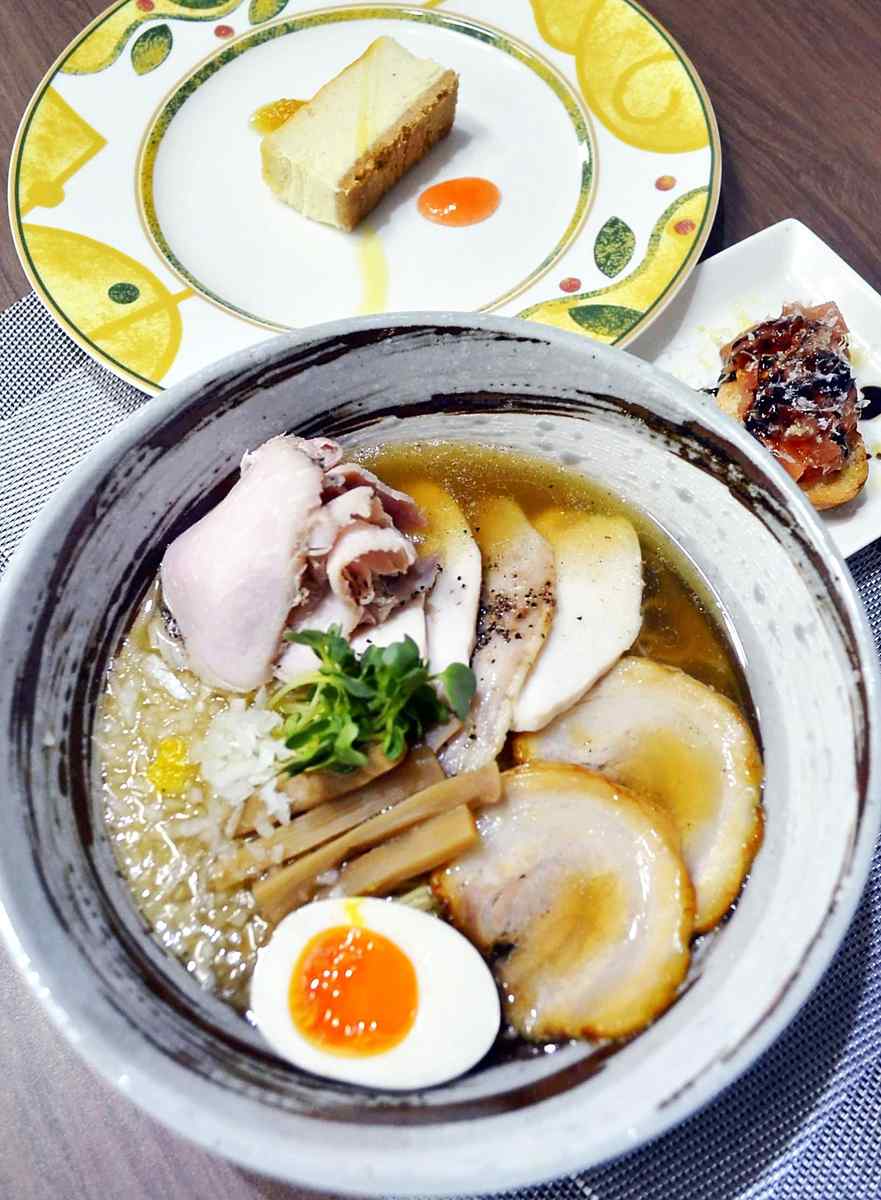
A fruit sauce garnishes a piece of cheesecake, rear, served at Nishiyamaya, a ramen restaurant in Hanno, Saitama Prefecture.
Nishiyamaya, a ramen restaurant in Hanno, Saitama Prefecture, wants its customers to “derive satisfaction from a complete meal.” To that end, Nishiyamaya serves ramen as well as desserts and side dishes handmade by the restaurant’s owner, Yoshitaka Nishiyama, who was previously the head chef at a five-star hotel in Tokyo.
Items on the menu include a bruschetta appetizer (¥300), cheesecake (¥550) and ramen containing a special broth made from flying fish and topped with pork slices cooked in a pizza oven (¥1,450). “Set courses always end up becoming expensive, so I let my customers choose the items they want,” Nishiyama said.
Ramen restaurants that accept reservations have become more commonplace. Ramen Break Beats, a restaurant that opened in Meguro Ward, Tokyo, in 2022, accepts only customers with a reservation. There is a ¥500 booking fee, but the 60 slots available each day quickly fill up.
Takuro Yanase, owner and chef at Ramen Break Beats, said: “There’s a limit to how much food I can serve in a restaurant with eight seats. Being able to interact with my customers and carefully prepare their meals is very rewarding, and the customers also are extremely satisfied this way.”
According to Yanase, customers feel entertained and enjoy watching the noodles being strained and the ramen being arranged in the bowl. Many customers do not order basic ramen such as that with a soy sauce-flavored broth (¥1,480), but instead opt for the “tokujo” special ramen (¥2,200).
When TableCheck Inc., a Tokyo-based company that provides a restaurant reservation system, launched a paid service in February 2024, only six ramen restaurants took bookings through its service. That number has since increased to about 40.
“Lining up for a long time can leave customers feeling less satisfied,” a TableCheck official said. “But when elderly people, families with children and others who find standing in line difficult are also able to taste the flavors of popular restaurants, our service gets warmly praised.”
Makoto Takahashi, a senior researcher at the Hakuhodo Institute of Life and Living, said many customers do not go to restaurants simply to eat ramen. “There’s also an emphasis on ‘experiential consumption,’ in which the experience of going to the restaurant also has value,” Takahashi said. Watching meals being prepared and savoring the exclusivity of eating ramen served in limited amounts falls under this heading.
“Eating a meal and posting about it on social media are all part of a single experience,” Takahashi said. “It seems that if customers feel extremely satisfied by this experience, they will decide that even a meal priced far above ¥1,000 is worth it.”
"Features" POPULAR ARTICLE
-
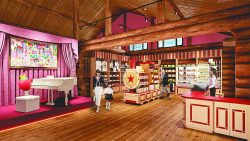
Sanrio to Open Museum in Yamanashi Pref. Dedicated to Founder, Exhibits Include Hello Kitty, Other Characters
-
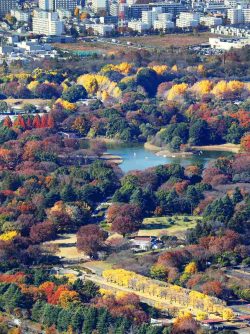
Autumn Foliage Surrounds Visitors to Tokyo’s Showa Kinen Park
-

My Daughter No Longer Speaks to Me, But I Want to See Her and My Grandchild
-

Kumamoto: Public Bath Refurbished as Library Where You Can Chat, Take Photos
-
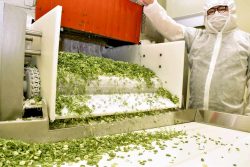
Frozen Vegetables: Demand Rises for Convenient, Tasty Domestic Produce
JN ACCESS RANKING
-

Keidanren Chairman Yoshinobu Tsutsui Visits Kashiwazaki-Kariwa Nuclear Power Plant; Inspects New Emergency Safety System
-

Imports of Rare Earths from China Facing Delays, May Be Caused by Deterioration of Japan-China Relations
-

University of Tokyo Professor Discusses Japanese Economic Security in Interview Ahead of Forum
-

Japan Pulls out of Vietnam Nuclear Project, Complicating Hanoi’s Power Plans
-
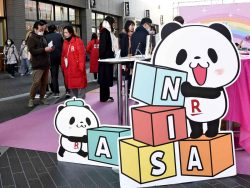
Govt Aims to Expand NISA Program Lineup, Abolish Age Restriction


